Graphite Molds
Top Graphite Molds Manufacturer in China
- Designed for gold/silver/copper ingot casting
- Top quality, durable graphite mold supplier
- As the source factory, large inventory, fast delivery
Get Price For Batch Order (MOQ 10pcs)
Top Graphite Mold for Sale
Graphite molds are made up of over 99% of graphite and less than 0.1% of ash content. The 0.1% ash content signifies that there is zero impurities that can get into cast metals. Graphite molds are used for casting molten metals and they came in various shapes and sizes. Metals such as copper, gold, silver, brass, bronze can be poured in their molten form into graphite molds and they take the shape and form of the mold after solidification. It has a smooth cavity finish that allows solid metal removal from mold easy. Graphite molds have a good thermal stability, they are resistant to corrosion, acid and strong alkaline.
Molds made of graphite do not react to acid, alkaline and salting solutions. Graphite molds have a good thermal stability, they are corrosion resistant, and they have good thermal conductivity.
Casting with graphite molds is very clean and environmentally friendly. The high quality graphite molds ensure a lasting long metal life.
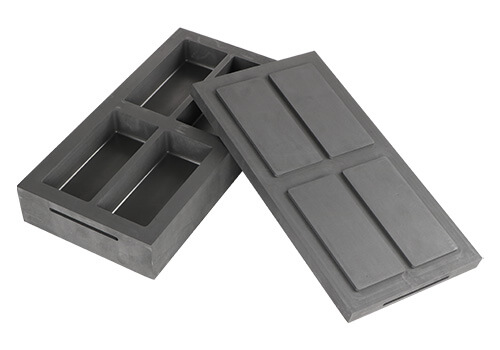
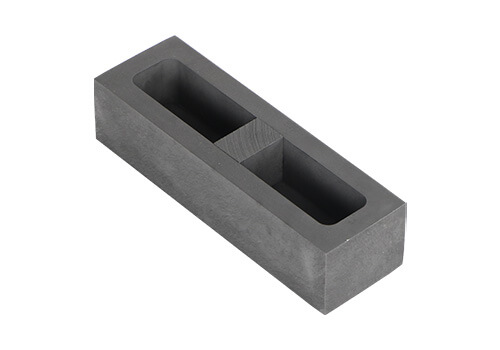
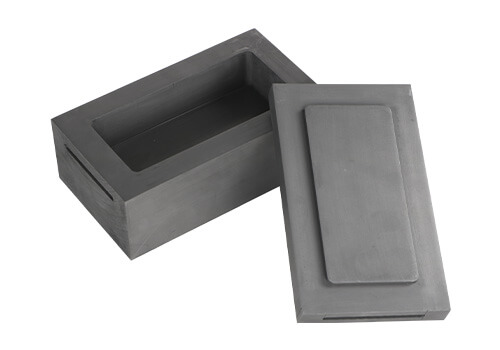
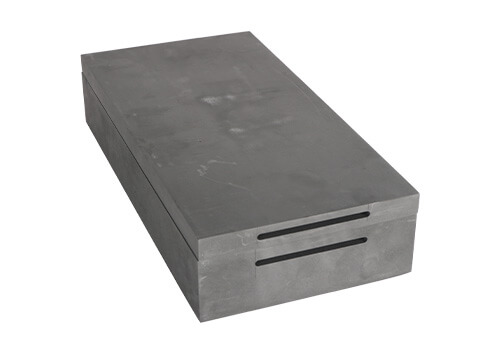
SuperbMelt Graphite Molds list
Superbmelt gold bar mold is made from a high density fine grain graphite machined from solid graphite extruded bar that has a smooth cavity finish. The graphite mold can be used in making bar form with precious metals like gold silver, copper and more. Gold bar molds come in different shapes and sizes that are suitable for all small, medium and large ingot productions.
Parameter
- Casting Capacity: 100g-3kg bars
- Application: gold, silver, copper, iron etc.
Graphite mold for silver has a wide application; used for holding molten gold, silver or other precious metals. It can be used for testing or ingot casting. The mold for silver has an excellent thermal stability for fast cooling and it has a proper corrosion resistance to acid and alkali. The graphite mold keeps its original natural graphite physical and chemical properties.
Parameter
- Casting Capacity: 100g-3kg bars
- Application: gold, silver, copper, iron etc.
The graphite ingot mold receives liquid metal of precious metals and other types of metals; and conserves them until they are solidified, they are later used as an investment or stored for jewelry use. Graphite ingot molds are made from high density fine grain graphite that comes in various sizes and shapes of square, rectangle and cylindrical.
Parameter
- Casting Capacity: 100g-3kg bars
- Application: gold, silver, copper, iron etc.
3 reasons why you must choose SuperMelt
01
We are the source factory
02
Graphite products with different densities
Provide high-density, low-porosity graphite products, extremely durable, very effective for smelting and casting, and have a longer service life than competitors’ products.
03
Graphite products are shipped extremely fast
As a top manufacturer, we manufacture 10,000 graphite molds every day and have a large inventory, which can meet the needs of various urgent orders for fast delivery.
Why You Could Choose SuperbMelt

AAA credit audited enterprise
The government Audited Superb as AAA credit company (top level).

ISO CE SGS approved
Professional certification bodies certify that the machines are of high quality.

Strong service team
We will give response within 24 hours against your problem by our professional engineer.
Guide to Buying Graphite Mold for Precious Metal Casting
Are you trying to cast gold, silver, rhodium, platinum, or palladium? Want to make an ornament from precious metals or looking to extract pure gold bars? Or maybe you need a mold that can serve for a long time? This buying guide covers everything you need to know about molds’ role in metal casting, its usage, the type of materials required, durability, and the mold material you should always opt for.
The role of Mold in the Metal Casting Process
First things first, what’s mold?
Mold is a hollow container used to give shape to molten magmas when it cools or hardens. In simple terms, it’s a metal casting equipment used for creating ingots and melting metals.
This cubicle like equipment goes by different shapes and size—depending on the type of metal you want to cast and the finish you want to produce. Molds usage in the metal casting industry dates back to 7000 years.
Here are the two most important roles molds are currently known for in the industry.
1.1, For Shaping Precious Metals
If you are not into the metal mining or jewelry casting line, you might be wondering, how can molds be used in shaping precious metals?
Precious metals are the most expensive and highly valued commodities in the global market—not because the mining process is difficult or risky, but because the finished products from well processed precious metals are incredibly remarkable.
Note that the finished product says little to nothing about the designing process. Looking at a gold jewelry or silver artifact from the lense of a fashionista hardly offers insights on what the production phase looked like.
Molds are not portrayed in show glasses or designed to provide the same luxurious feel as precious metals are. Molds are the dejected and sometimes shattered cubicles used to give a precious metal’s liquified molten magma the required shape.
Molds are built based on specifications. Whether you want to melt your gold and shape it into gold bars, design pieces of jewelry, artifacts, or even electronic parts, you need to purchase a suitable mold.
1.2, Used as a Melting Vessel
Extracting metal is a difficult task. Let’s say after the many hours, days, or even months of mining, you acquire precious metals worth every sweat. While you tempted to immediately take it to the market and exchange your raw gold or silver for cash, the little genie within you wouldn’t give room for such thoughts.
So you resign to the melting process. You might be bold at extracting precious metals from deep seas, but you are not tough enough to melt your newly extracted metals while holding them on your hands—you need a piece of equipment.
What do you source for? A Mold.
Molds are not only viable for creating ingots, they are also necessary for purifying and refining used metals. Precious metals can be liquified by inserting the raw material into a mold and applying adequate heat to the mold material.
Molds are widely used in the mining industry; its usage is in no way limited or restricted to just miners; hobbyists, artisans, designers, and even the bourgeois folk looking to extract precious metals from an old ornament and exchange it for cash can enjoy its productive value at a minimal cost.
How to Smelt Gold Nowadays
Let’s say you want to buy a car, which of this scenario sounds ideal; walking into the car factory with little to no information about the type of car you want, or carrying out in-depth research about the kind of car you need, its durability and specifications before making a move for it?
Suppose you are of the notion that the latter is a better choice. In that case, you know that to choose a mold for precious metal casting, you must familiarise yourself with the types of mold materials available, durability, and industry trends.
2.1, What Materials Are Used as Molds for Precious Metal Casting Molds
Precious metal casting has been in existence for a long time. A lot of materials have been attributed to the molding process since time inception. To help you make an informed decision, we shortlisted the three most durable materials for casting gold bar mold with detailed usage and durability description.
- Cast Iron
- Steel
- Graphite
Cast Iron
Cast iron is one of the environmentally friendly metal casting material. Its design and usage as a mold making material date back to a 1967 book by Fisher. Cast iron possesses an easy to mill alloy suitable for designing precious metal casting mold.
Research shows that few parts of a cast iron alloy sometimes possess several combinations of graphite forms and matrix, unlike steel or Graphite. That’s to say, its strength, machinability, ductility, and ware resistance are subject to variation—you can obtain a cast-iron mold of better durability than steel or Graphite in scenarios where you wind up with a cast iron alloy possessing parts of other alloys.
Cast iron is tagged amongst the simplest materials to cast, but unfortunately, its usage doesn’t run rampant in any industry; why is that?
Cast irons are difficult to understand in terms of behavior—that’s its reliability depends on a lot of factors. To cast a mold using cast iron, you have to align the chemical composition, melt treatment, heat temperature, and the cooling rate during solidification, or you would end up with mold structure and properties far from your desired finish.
Due to its complicated behavior, casters regard cast-iron as a mold casting material suitable for melting processes not reliant or dependent on a smooth surface finish. Let’s say you are looking to cast a gold bar you know would be melted down as soon as it hits the market, you can enjoy the environment-friendly impact that comes with using cast iron alloy.
Note that you have to lubricate your mold with a lubricating fluid of choice when molding with cast-iron molds. Lubricating your mold helps prevent sticky edges after molding.
Features of Cast Iron Molds
- Simple to Cast: cast iron molds cost little to nothing to cast. With a cast iron alloy in hand, a cutting tool and your safety equipment, it wouldn’t take more than a few hours before you start enjoying the continuous casting opportunities its molds offer.
- Environmental Friendly; creating a graphite mold can leave you with a dusty and unkept environment if the right CNC machining tool is not used. Cast iron molds are designed via clean and smooth cuts. You can create a customised cast iron mold for melting precious metals within a short period of time at minimal cost.
- Complex Behavioural Pattern: cast iron casting process can become corrosive—depending on the material contained in the alloy—and also leave sticky edges. it’s advisable you use cast iron to melt materials or cast ingots reliant on the polishing process for a perfect finish.
Finish is Subject to Variation: Yes, you can use cast iron molds to cast precious metals. But before casting, it’s important to bear in mind that cast iron is not as stable as graphite or steel—its finish is subject to variation. That’s the strength, machinability and ductility of its cast can provide a finish different from the original design—depending on the raw materials contained in your cast iron alloy.
Steel
If you are looking for a mold that can take on the intense pressure that comes with metal melting for a very long time, then steel molds should be a prioritized pick.
Steel has been at the forefront of the metal melting industry for hundreds of years. It has built an influential reputation as a mold material in the machine manufacturing, automotive, technology, mining, and jewelry industry. Steel possesses a flexible and smooth finish.
While steel remains a reputable material for melting precious metals, there a few downsides you might want to take note of before investing in it. Steel is susceptible to corrosion—that’s a chemical reaction can spark irreversible damage to the material.
You might be of the notion that since steel is all hard and tough, you can keep your metal fuming for hours in high temperature—steel isn’t fireproof. Yeah, molds made with steel has the potential to last for over 30 years, but you have to regulate the kind of temperature you expose it to.
Steel is quite expensive, the day to day craftsman might have a hard time affording it, and just like cast iron, steel molds require the use of lubricant to eliminate rusty edges. Steel molds come in adjustable versions or wire strip molds; it’s essential you evaluate the task at hand before scouring the internet for a steel mold.
Steel’s longevity and durability make it an excellent mold material for smelting ferrous and non-ferrous metals. Though, Its reliability in melting precious metals is on a decline due to its low production rate.
Steels are tough and robust alloys. It takes a considerable amount of time for the heat of a melting furnace to penetrate an alloy of such caliber and almost the same amount for it to cool. Steel molds can hinder efficiency when required for massive production of gold or silver bars.
Features of Steel Molds
- Readily conducts Heat: steel molds possesses a fast cooling time in comparison to graphite molds. While its strong nature accumulates a longer melting time {in comparison to graphite and cast iron} when used as a cubicle for melting precious metal, its ability to conduct heat readily helps shorten the time cycle—giving it a competitive advantage over the other two mold materials in our list.
- Resistant to Thermal Fatigue: steel are very strong alloys. Whether you are using it to create ingots or melt precious metals, you don’t need to worry about leakage or breakage. Note that the thermal resistivity of steel molds weakens faster when used for continuous casting in comparison with graphite molds.
- Durable and Long Lasting: steel molds can last for up to 30 years. Some of the factors that determines its reliability are the industry in which it is being used, the designing process, and the materials that go into the designing process.
- Requires Lubrication: You need to lubricate your steel mold before using it to cast precious metals. Using a steel mold without lubricating can leave sticky edges. That’s you might have to settle for a cast different from the original design.
Graphite
Every jeweler wants to own mold with high degree dimensional accuracy, good machinability, and exceptional finish. Graphite molds are not the strongest nor the oldest molds in our list, but it’s the most outstanding.
Unlike most other mold making materials, Graphite can self-lubricate—no sticky edges, no crack on gold bars, just plain and beautiful finish. Graphite does not possess a substantial lifespan; its durability can last a maximum of 120 hours.
In its raw form, Graphite is the most stable form of carbon under standard conditions. As a mold material, the dimensional stability of its rare nature attracts guarantees quality. Using a graphite mold for day to day operations of a foundry or precious metal laboratory offers near net-shaped repeatability.
Graphite mold is the top pick in most industries. Its durable and flexible nature earned it the top spot for the most used mold making material in the United States. Graphite molds enable continuous pouring, solidification, and withdrawal.
You can purchase a graphite mold of different sizes and shapes—depending on your industry and the type of task you want to embark on. Note that, while graphite molds are used in automotive, tech, aviation, and other notable industries, its dominance is prominent in the precious metal casting industry; Why is that?
Graphite molds are cheap; The average jeweler, small foundries, and other mechanical industries can rely on its durability without breaking the bank.
Its usage procedures are cost-effective; when casting gold or silver with graphite molds, you don’t just enjoy its superior finish at a cheap rate. Its ability to self-lubricate means you don’t have to spend a dim on lubricants.
Possesses a fast-melting and cooling time: its stable carbon nature makes it a good fit for smelting metal in any metal casting furnace. The heat up and cooling time are relatively short.
Graphite molds possess excellent thermal stability and are corrosion resistant: steel, as we mentioned earlier, is a great mold making material but not in the precious metal industry. Its corrosive nature can leave you at a loss on multiple occasions.
Custom mold: Graphite can be finetuned into any shape or size. Regardless of the type of finish you want your gold or silver bar to possess, graphite molds got you covered.
If you are looking for a mold with an exceptional finish, good machinability, mechanical strength, and self-lubrication—explore the different graphite ingot mold available in our store.
Features of Graphite Molds
- Properties: graphite is a form of carbon. It possesses a coefficient expansion far lower than that of steel—that’s its ability to hold shape when filled with molten magma without providing a porous finish or sticky edge is far greater compared to steel or cast iron.
- Does not require heat treatment: Almost every mold material available in the global market requires heat treatment to be fit for use. Graphite is among the few mold materials that can be tooled without the application of heat.
- Built for Continuous Casting: Continuous casting is the norm in every metalworking industry. Jewellers or foundry owners hardly fancies molds that provides one-time usage. The introduction of a well-built graphite mold into the casting process leaves room for continuous casting. Its lower cost and fast processing time makes it the best mold casting material for casting silver bar molds, bullion molds, ingots and custom molds.
- Does not Readily Conduct Heat: graphite tooling process can keep you waiting for your molten magma to turn into ingot far longer than steel or the traditional die casting method would.
- Machined in two Halves: the design process involved in creating a graphite mold is same as cast iron and steel. To obtain effective graphite mold casting, it’s essential you machine the mold into two halves similar to the object you want to cast before filling with molten magma.
Amongst all the different materials we mentioned in our list, Graphite retains the number one mold making material spot for casting precious metals. Its downsides are limited. Compared with cast iron and steel, graphite molds possess advantages that can help you save time and cost better than counterparts.
2.2, Why Graphite Molds are the Most Popular
We have listed the three most prominent mold making materials in the gold melting industry. Now let’s talk about features that will help you make an informed decision in the shortest time possible—let’s break the complex text above into bits.
Cast iron, silver, and Graphite are the top three on our list; which do you think would provide your precious metal casting business with sustainable solutions?
| Cast Iron | Steel | Graphite | |
| Cost | Rare and expensive for melting precious metals | Readily available but quite expensive | Readily available and inexpensive |
| Dimensional accuracy | Medium | Medium | High |
| Reliability | machinability, ductility, and ware resistance are subject to multiple variations | machinability, ductility, and ware resistance are subject to multiple variations | machinability, ductility, and ware resistance are subject to the heat applied |
| Corrosive | Not corrosive | Corrosive | Not corrosive |
| Surface finish | Does not self-lubricate and might leave sticky edges with rough surface finish | Does not self-lubricate and might leave sticky edges with rugged surface finish | Self-lubricates and provides a unique surface finish |
| Durability | Depends on numerous factors | Over 30 years | 8 to 120 hours |
| Environmental effects | Environmental friendly | Quite corrosive | Environmental friendly |
A peek at the table above gives you adequate info on the market potentials each mold making material widely used brings to consumers.
Customer satisfaction, durability, and profit lay the foundation for growth in every business. You don’t need a sooth sawyer to tell you that graphite molds are the most popular because their solutions are outstanding.
There are a lot of graphite molds available in the market. To save yourself the stress of scouring an overcrowded market or, even worst, falling for unsophisticated graphite molds, you can explore our gold, silver, and ingot mold catalog.
Why chose SuperbMelt Graphite Mold
SuperbMelt is an electro-machinery company specialized in the production of melting and casting machines. We have been in operation for over 15 years and have successfully built a customer base in over 20 countries within Europe, Asia, and America.
SuperbMelt operates with the core mission of producing machines synonymous with high quality. To keep operations in line with our mission, the following strategic measures are in play;
- 2 Years Warranty: we believe in the authenticity of every product in our store, but we know our customers can sometimes be skeptical. And since we pride ourselves as a consumer-focused company, you get two years warranty for every item you purchase from our store.
- An Audited Enterprise; doing business with an enterprise you don’t trust is risky. We love our customers and want to build a healthy business and consumer relationship with them. SuperbMelt is an AAA audited government enterprise; you can trust our products, knowing that the government fully backs our credibility.
- Efficient service team: keeping you waiting doesn’t only hinder sales but also dampens our reputation globally. SuperbMelt didn’t make it this far by ignoring the exceptional marketing opportunities attached to tending to customers within the shortest possible time. At SuperbMelt, a maximum of 24 hours response time is guaranteed.
- Fast Delivery: Many jewelers and foundry owners don’t like searching for a graphite mold online, scared that delivery might not be possible. With SuperbMelt, our worldwide delivery service got you covered; whether you are in the suburbs of Europe or the serene environments of Africa—SuperbMelt exists to serve you better.
Purchasing a graphite mold can turn into a wild goose chase if you are not familiar with the design and production process. If you can stick with this piece for a few more minutes, you will see why we are confident high quality is always guaranteed when purchasing an item from our store.
3.1, How we Produce Graphite Mold
Since you are looking to purchase a graphite mold, we assume you have been in this business line for a while. You have used different types of mold without knowing how and what goes into the manufacturing process.
Yeah, you might not have noticed it, but at SuperbMelt, we are kind of detail-oriented. We love filling our customers in on the processes, twerks, and possibilities our products offer. To avoid bombarding you with all the boring jargon attributed to the production of a graphite mold, highlight four significant production steps and why they are essential to creating graphite mold.
- Control Raw Materials
As you already know, the materials that go into your graphite mold creation and design determine its durability. Steel and cast iron are seconded to graphite molds not because the silver bar mold they produce are not strong enough or wouldn’t provide the desired finish if due measures are taken. But because the components steel and cast iron possess are not in line with the type of casting process precious metals require.
Our Graphite mold manufacturers are incredibly picky about the type of materials that go into the design process. Graphite is a stable carbon. Its flexibility and durability are in a class of its own—from such information, you might fall for the concept that since Graphite naturally exists as a stable alloy free of the corrosive nature attributed to steel and cast iron, every graphite mold would do a great job; Nah that’s not how it works.
Graphite stability depends on whether you regulate the raw material used and whether the manufacturing procedures are adhered to. With the rise of customized graphite mold, you will readily find molds not designed with specifications in line with the metal casting production process to suit customers’ preferences.
At SuperbMelt, strict measures that regulate the design and development of our gold, silver, or ingot molds are in play.
- Process Levels that can Meet Different Standards
The specifications for a graphite mold required to run a foundry is different from the once a hobbyist would need to cast metal. Graphite mold processing levels vary based on industry, business, and sometimes geographical location.
With an overcrowded market, it’s easy to come across companies offering a one-size-fits-all graphite mold. Yeah, making a one size fits all graphite mold is possible but attaching a sustainable warranty to such molds is impossible.
As we said earlier, all our products come with a two-year warranty—we can’t offer a smelting company and a bench jeweler graphite of the same standard. Our process level can also vary based on industrial specifications and requirements.
- Precision CNC Machining
SuperbMelt possesses a skilled Research and development team. This team caters to our graphite mold 2D and 3D card drawing process. Our team specializes in our graphite mold’s research and design process, while the intricacies of manufacturing are left to CNC machining.
We provide graphite molds of different quality and types for multiple industries. To keep operation and durability in line with production, we rely on a manufacturing process built milling the Graphite to the desired shape. CNC machining process is regulated based on mold specifications, industry, and consumer preference.
When casting precious metals, obtaining a perfect finish requires a perfect pitch process. With multiple CNC systems executing our program codes, and an operator to give it an instant trail run, you can rely on our custom graphite mold development services rest assured you are in safe hands.
- Testing
it’s impossible to certify the authenticity of something you haven’t tested. We don’t design graphite molds just to attract profit; we do it because we know it can better the lives of millions of consumers out there.
Our testing process is built around examining our graphite mold’s credibility, vetting its specification and design with that of our consumer, and validating its importation and delivery process.
The testing process is the last phase of design. In scenarios where a design is not in line with consumer or industry-based specifications, we send our R&D team back to the drawing board. This strict testing measure helps us keep our reputation in check while aiming for higher grounds.
3.2, Features and Benefits of the Graphite Molds Available in Our Store
3.2.1, Graphite mold for Gold
Our graphite mold for gold is machined out of solid graphite extruded bars—optimised to provide a smooth and fine finish. The graphite gold mold is built to cast gold ingots, metals and bullions.
- Features
Excellent Thermal Stability: Graphite molds for gold are exposed to different temperatures daily. From its usage as a melting tool to the cooling phase where ingot is expected, we kept its thermal stability in check. Whether you are in need of a graphite mold for high density task or extremely low pressure, you can purchase our graphite mold for gold rest assured, durability is guaranteed.
Corrosion Resistant: metals are tricky materials. Their ability to react without prior notice can lead to burn and breakage. Our graphite mold for gold are optimised to keep such situations in check.
Made from Ashes and Graphite: our graphite mold for gold is machined out of solid graphite extruded bars made from 99% graphite and 1% ash. Its components make it a fine choice for miners or jewellers making bars from gold, silver, copper and other non-ferrous metals.
- Benefits
Smooth and fine Finish
Metal casting is all about the end product. You can spend hours melting metal or waiting for an ingot to cool and still not obtain the finish product end users desire. With our self-lubricating graphite mold for gold, a smooth and fine finish is guaranteed from all operations.
Suitable for all type of Precious Metal Melting and Casting Operations
Every industry prefers working with a mold optimised to serve their needs. If you are into melting or casting precious metal, then you can smile knowing we built the graphite gold bar mold to meet all your casting needs.
Serves a Wide Range of Customers
Are you casting precious metal in a foundry? Or into glass moulding with die, centrifugal casting, sintering mold or smelting precious metal? SuperbMelt gold bar mold got you covered. knowing precious metal casting is a dominant part of almost every industry, we provide custom gold bar graphite molds solution for diverse industry needs.
3.2.2, Graphite Mold for silver
Machining precious metal have never been this easy. Our graphite mold for silver is built out of 99% silver and 1% ash. Whether you are bench jeweller, or you have acquired a dominant reputation in the industry, our graphite mold for silver is optimised to serve you better.
- Features
Extremely Stable: it’s never an amazing sight to see your mold crack or break at the middle of an intense casting operation. Since we wouldn’t want you to have such an experience, we built our graphite mold for silver out of raw materials that guarantee stability. Made of 99% graphite and 1% ash, you can keep the molten magma coming all day without fear of spillage or leakage.
Possesses a Dense Structure: molds that leave room for porosity always provides a surface finish that’s not enticing to the eye. To keep our consumers at a safe edge, our graphite mold for silver possesses a dense structure that keeps its tensile strength increasing when the heat applied to it is on the rise.
Self-Lubricating: having to lubricate a mold each time you want to engage in a melting or casting operation is not only time and energy consuming, it’s also expensive. With our graphite mold for silver at your disposal, you can enjoy a smooth and fine cavity finish without having to worry about lubricating your mold at every turn.
- Benefits
Time & Energy Saving
The amount of time you spend melting or casting a metal should determine the income you obtain. With a lot of unreliable molds available, a lot of jewellers and miners have retired with the idea that it’s impossible for time spent to determined income in the industry. SuperbMelt graphite mold for silver helps hasten the melting and casting process to provide a unique finish within the shortest possible time.
Eliminates issues of Contamination
A contaminated metal can lead to shortage in the lifespan of metal and even cause corrosion during the casting process. Metals can get contaminated during the molding phase {from the raw materials added to the molten magma or the once used to design the mold}. We design our graphite molds for silver with raw materials that eliminates issues of contamination within or after the casting process.
Smooth Cavity Finish
Every business or industry involved in metal casting appreciates the growth opportunities moulded metals with a smooth cavity finish brings to the table. Do you want a finish free of porous edges, a mold not liable to breakage and a casting process that saves time and energy? Explore our graphite silver molds collection.
3.2.3, Graphite Ingot Molds
Whether it’s molten magma from precious metals or heat from smelting furnace, SuperbMelt graphite ingot molds are built to withstand the hot temperature and hold till metal solidifies. Our graphite ingot mold is a product of high density fine grain graphite.
- Features
Resistant to Strong Acid & Akali: strong acid and akali are amongst the few substances that weakens the durability of a mold. If you have felt the breakage or spillage effect that exposing a mold to strong acid or akali can lead to during casting and are worried about such a scenario repeating itself, it’s time to put such worries to rest—SuperbMelt graphite ingot mold is built to withstand strong acid and akali without leaving a dent on it structure.
Shock Resistant: most molds crack or break under high or extremely low conditions. Most times they give in without warning allowing the molten metal to spill or even worst, pour on you. Our graphite ingot mold is shock resistant—that’s regardless of how high or low the temperature might be, its durability is guaranteed.
High Mechanical Strength: while our graphite ingot molds are built to hold molten magma, we are quite certain a few occasions might require its input in a furnace. To ensure that our users are always on the safe side, we built our graphite ingot mold with a mechanical strength capable of withstanding temperature of over 1600°C.
- Benefits
Provides Better Finished Product than Silicon Carbide Graphite Cubicles
If your business is unable to rank among the providers of casted metals offering the best finish in your industry, then you shouldn’t think about leading industry conversations. Silicon carbide graphite cubicles offers a nice surface finish to casted metals, but not outstanding enough to earn you a reputable spot. With our graphite ingot molds, you can wave goodbye to finished casts with unmarketable surface finish.
Reduced Casting Time
Time plays a vital role in the growth and establishment of your business in any industry. since you wouldn’t want to waste any scoring the internet for reliable graphite ingot molds, we recommend you explore our ingot mold collection right away.
Durable at all Temperatures
During the metal molding process, change in temperature is a must—you are either melting the metal in a furnace or leaving to cool. Regardless of which phase of the metal casting process you are in, you need a mold that can withstand both temperatures. Take a sneak peek at our custom graphite ingot molds catalogue, we are quite certain you will find something soothing for the task at hand.
Industrial Application, Advantages, Factors to Consider When Buying a Graphite Mold and Conclusion
4.1, Industrial Application of Graphite Molds
We have talked about the durability, usage, benefits of using a graphite mold. Its high time we focused on the industries where graphite serves as a viable melting or casting material.
- Jewellery Casting Companies
From the bench jeweller to the big companies catering to the production and design of jewellery, graphite molds runs prevalent. You would hardly find a jeweller not making use of the many melting opportunities and casting possibilities graphite molds bring to the table daily.
At SuperbMelt, we possess three types of graphite molds fully optimised to serve the needs of individuals in the jewellery making industry and beyond. Our silver graphite molds are made of 99% graphite and 1% ash to ensure long lasting usage and a thermal stability comparable to no other.
Our ingot graphite molds are optimised to withstand intense heat while proffering continuous usage. This ensures that while its durability is highly enjoyed in the jewellery casting industry, its usage is fully optimised to serve research companies and factories involved in casting ferrous and non-ferrous metals.
- Tech Industry
Gold, silver, copper and other non-ferrous materials are commonly used in the tech industry. Most of the transistors you find in tech products went through the regular molding process.
With graphite molds possessing a thermal stability comparable to no other and a fast end energy efficient processing time, its dominance in the creation of tech transistors and semi-conductors didn’t come as a surprise.
SuperbMelt graphite molds are built to serve experts and technicians in the tech industry. the minimal thermal deformation attributed to our ingot graphite molds makes it the perfect fit for creating semi-conductors and transistors.
- Automotive Industry
You might be wondering, how can a mold making material mainly used in the precious metal casting industry tend to the diverse needs of experts in the automotive industry?
The automotive industry is known for its pressure casting requirements. A lot of parts used in designing automobiles are products of pressure casting. Graphite molds provides renowned molding solutions to the non-ferrous metals used in pressure casting automotive parts.
- Glass Ware
Glass wares requires a melting process that attracts low porosity and comprehensive finish. To melt glass wares, you require a molding material capable of providing accurate precision, high strength and high purity—luckily, graphite possesses all three. Graphite molds are used to make glass tubes, funnels, bottles elbows and the likes.
Our graphite ingot molds are built to provide a unique finish to the glass melting process. We optimise our ingot molds with raw materials to keep its thermal stability in line with hot or cold temperature. With 1% ash and high precision CNC machining, our graphite ingot mold can help you build a reputable brand name in the glass melting industry.
- Centrifugal Casting
Finding a more durable and sophisticated material for casting thin wall cylinders can keep you scouring the internet for hours. Graphite molds have acquired a renowned reputation in the centrifugal casting industry. known as a durable casting method in the US and abroad, graphite molds are typically used to cast bronze sleeve.
Using graphite molds in centrifugal casting requires certain anti-oxidization measures to avoid issues of burning. Graphite molds, after being used for a certain number of centrifugal casting activities can easily lose shape. To eliminate replacement at an early stage, it’s advisable you enlarge the inner hole of the mold to provide a smooth and durable finish for large castings.
- Refining laboratories
Metals in their raw form possess very low market value. With numerous refining laboratories around the globe working tirelessly to ensure that miners and bench jewellers enjoy a good return for their metals, you wouldn’t want to undermine the usage of graphite mold in such an industry.
Graphite plays an important role in refining and polishing precious metals. Its ability to serve as a casting equipment and also help in the melting process at no extra cost has enticed a lot of refining laboratories into building their working process around its reliability.
Graphite molds provides a smooth and fine finish. Whether you are looking to build a refining laboratory around smelting precious metals or creating gold bars and ingots for the global market, graphite molds can help keep you on top of industry trends.
- Research companies
A lot of research go into the mining and development of metals. Ranging from the mining site to the type of raw materials to be use in the casting process, hundreds of hours are put into making these decisions.
The usage of graphite mold in the research industry is not as rampart as it is in the jewellery casting industry. Yeah, you might find only a few hundred research companies banking on the reliable melting and ingot making process graphite molds offer due to the variance in durability with casting materials such as steel and cast iron.
Note that this does not in any way mean that its reliability in the industry is to be undermined. If after due research on the type of mold making material required for a casting a metal is carried out and graphite molds seems probable, don’t hesitate to pick one of substantial standing from our collection.
- Factories
Graphite molds serves as the industry standard in most factories. Its environmentally friendly casting process and smooth finish helps saves time, energy and cost in most factory operations.
Graphite molds design and durability in factories is dependent on the type of material you are using it to mold or melt. To help keep productivity in line in operations, its essential you opt for a customised graphite mold. You can book a call through to our customer support service today to kickstart the process.
4.2, Advantages of Using a Graphite Mold For Precious Metal Casting
Since we have discussed the opportunities custom graphite mold for gold, silver and ingot brings to numerous industries, let’s take a look at some of the advantages graphite molds brings to day to day business activities.
Cost
Cost is an influential factor in every business. Your budget determines the type of facilities, tools and equipment your business enjoys. You might fall for the notion that since graphite molds are regarded as regarded as the top equipment for melting or molding precious metals, its cost would be on the rise.
But NAH. Graphite molds are among the most inexpensive molds available. Whether you are looking to purchase a custom graphite mold for a massive casting process or want a gold ingot mold to cast few gold ornaments you want to sell, you can obtain reliable graphite molds at cost efficient prices.
Lower Production Time
Time is as important as life. If you decide to take an hour to finish a task you can accomplish in less than 30 minutes, you wouldn’t need anyone to tell you that you are 30 minutes poorer.
Graphite molds are optimised to accomplish a task within the shortest possible time. Its thermal resistivity and non-sticky edges can help hasten the metal casting and manufacturing process. Note that while steel ingot molds possesses a better cooling time than graphite ingot molds, the time spent on lubricating a steel mold makes its molding process relatively longer than that of graphite.
Permanent and Reusable
Since it’s a known fact that nothing lasts forever. Money, health, time, and even machines at some point stops working. You might be wondering, why do we say graphite molds provide a permanent finish? And how authentic is such a claim?
In comparison to steel and cast iron, graphite molds don’t rust. They don’t at some point provide a finish not in line with the desired design. While graphite molds are prone to breakage when exposed to extreme heat, its usage within its warranty period proffers 100% reliability.
Graphite molds are suitable for continuous casting. You can use graphite molds for 8 to 120 hours continuously without worrying about the casting it provides. Graphite molds can also be stored for a very long time without losing shape.
Withstand High Temperature
Graphite molds are built regulate heat of up to 3000°C. Unlike most other materials used in molding metals, graphite reacts to heat uniquely. Increasing the heat applied to a graphite mold automatically increases the compressive strength of the graphite.
That’s when you increase the heat being applied to a metal from 500°C to 1000°C, the graphite comprehensive strength automatically increases by 20%–the more you increase, the more its compressive strength rises. Note that its compressive strength does not only help in regulating pressure, but also help eradicate issues of breakage or mold failure arising during the heating process.
Easily Machinable
If you are among the few jewellers or foundry owners that shy away from the mold making process due to the intricacies involved in mold making, brace yourself, graphite molds are offering opportunities you never thought possible.
The metal casting industry is filled with a lot of mold making processes that takes days and sometimes even weeks to design. Graphite molds are durable, long lasting, efficient, and easily machinable.
With the right tools, you can machine a custom graphite mold yourself. The tools required for graphite mold making include CNC machine, safety gloves and goggles, 3D schematics of the object you want to mold and a well-ventilated environment.
4.3, Factors to Consider When Buying a Graphite Mold
If you have been reading thus far, we think is safe to assume that you are in search of a graphite mold for sale. There are a lot of graphite mold manufacturers across the globe with different mold designing pattern and sequence. To ensure that you are banking with a graphite mold manufacturer capable of tending to your molding and casting needs, lets hint all the factors that you must put into consideration before considering any graphite mold solution.
- Type of Business
Every market survey begins with the type of business you are into. Your type of business determines the materials and equipment necessary for efficient growth. Graphite molds are suitable different business types, though, each business requires custom specifications.
Here are some of the questions to consider when trying to navigate a suitable graphite mold for your business;
- What is my primary business need?
- Who are my ideal customers?
- What type of graphite mold would best suit my business need?
- Do I need to opt for custom graphite mold specifications to meet the needs of my customers?
Offering probable answers to the above question would help you determine the graphite mold design to opt for.
- Industry
Another major factor to consider when looking to buy a graphite mold is the industry you are in—this should come-in immediately after considering your business type. Your industry determines your business mode of operations. If you are in the jewellery casting industry, eying graphite mold designs meant for the tech industry would do you more harm than good.
Here are some of the things to consider when checking out graphite designs based on industry:
- Try to explore the options available in your industry.
- Ask questions regarding why such designs are prevalent and the risk attached to opting for a different design.
- Check out the different custom graphite molds available.
- Trends
You might not have noticed it, but the trend determines how and when to invest in an equipment or tool for your business. Every business and industry enjoy a boom of different trends at different times. What might be trending in the automotive industry might not look enticing to research companies; so, before checking out trends, keep your business and industry needs in mind.
Factors to considering when exploring trends
- What’s new in my industry?
- How is scaling up with the previously exiting once?
- Which graphite mold designs are the top dogs in my industry readily investing in?
- How is this new trend in line with my customers gaol?
- What’s the cost and efficiency like?
- Raw Material
Now to the basic of graphite molds. If you explored chapter 3, you would find out that we provided detailed explanation to the type of graphite molds available in our store and the materials that went into the creation process. Whether you are looking for a custom graphite mold to cast silver bars or a gold ingot mold to cater to the dynamic needs of your business, the raw material involved in the production process must be at the forefront of your consideration criteria.
The raw material determines how long a graphite mold would last, its efficiency in your industry, and the productive/growth value it’s going to ass to your business.
Before choosing any graphite mold manufacturer, ask the following questions:
- Which raw material do you use in the production of your graphite mold?
- For which industry or business are such raw materials regarded as a trendy option?
- How can such raw materials help scale business growth?
- What’s the warranty attached to the usage of your graphite molds?
- Design and Customization
We kept design and customization for last because almost every graphite mold manufacturer is focused on providing custom designs. Unlike most other processes attached to casting metals, the mold development and usage is reliant on the object or design provided.
If you know your business and your industry, the kind of ferrous or non-ferrous metal you want to cast, the trends and raw materials readily used in your industry, then you are good to go—the design and customization sequence is based on the object you want to cast.
Suppose you are having a hard time comprehending the factors involved in picking a graphite mold, you can place a call through today—our customer support agents would be more than happy to tend to your needs.
Conclusion
Graphite ingot molds are necessary for the functionality of foundries and smelting companies. SuperbMelt offers graphite mold for silver, gold, and ingot molds. Our graphite milling process is built around ingenuity and precision.
If you have made up your mind about purchasing a silver, gold, or ingot graphite mold with high thermal resistivity at low cost, don’t hesitate to put a call through to our support team for customized designs or, better still, pick one of the existing graphite mold designs available on our list.
FAQs
How long does a graphite mold last?
A graphite mold can last for 8 to 120 hours during continuous usage. Numerous factors regulate the estimated lifetime of a graphite mold. Some of the factors involved are Composition of the cast alloy: a graphite mold containing elements such as Fe, Li, Zn, and Sn can shorten the lifecycle of a graphite mold. The time between liquidation and solidification: the type of metal you are casting can determine how long your graphite mold lasts. If you regularly cast precious metals that require high pressure to melt and a long solidification time—your graphite mold might not experience the 120 hours continuous casting benchmark. Porosity and Density of the Graphite: while graphite molds are widely attributed to goldsmiths and miners involved in precious metal casting, its reliability goes beyond the gold and silver market. Using high porosity graphite grades to cast alloys containing nickel, zinc and tin can weaken its lifespan; it’s advisable you rely on dense low porosity graphite when casting such alloys. Temperature: the type of temperature {high or low} you expose your graphite mold to on a regular determines how long it would serve the desired purpose. Absorption of Liquid: before casting, it’s essential you ensure that your graphite mold is liquid free. Molds absorbed in liquid before casting attracts high pressure that can cause breakage during casting. To avoid such scenarios, dry mold for 12 to 24 hours before using it to cast.
How do you make molds from Graphite?
CNC machining is the easiest, fastest, and safest way to make graphite molds. Since the tools required to optimize surface modeling is quite expensive and challenging to master, lets highlight how you can make molds from Graphite using CNC machining as a solid modeler. First things first, you need synthetic Graphite that is dry. Avoid trying to machine Graphite that is wet or absorbed in liquid. If the only handy Graphite is in such a state, dry for 12 to 14 hours before diving into the machining process. When Graphite is ready for use, look for a room or environment with adequate ventilation to avoid accumulated graphite dust during the milling process. With a handy design and specifications to follow in mind, engage in CNC machining. Endeavor to work with a CNC machine built to handle graphite dust to avoid voiding its warranty. Use a 1/8 endmill on your CNC machine to mill the pockets to a desired shape and size. Rely mainly on the sharp edges while drilling from outside into the graphite material. This will help you mill safely without fracturing the graphite material. When you finish milling, compare with custom specifications, if inline, you can kickstart the molding process.
How to use graphite molds?
Graphite molds are used for smelting precious metals. Usage of graphite mold requires a smelting machine, resistance furnace or propane torch, precious metal to melt, hand gloves, and goggles. Insert the metals into the graphite mold and place it in your resistance furnace or smelting machine. Leave to heat until its substance liquefies. If you are melting gold and would like to remove impurities, you can add a mixture of nitric and hydrochloric acids during the melting process—it will help bring the impurities to the top. When the heating furnace reaches the desired degree, remove mold and leave to cool till ingot forms. You can embark on this process again after the graphite mold cools down.
What are ingot molds made of?
Ingots are made of high-density fine grain graphite. This Graphite’s can be milled into different shapes and sizes. Ingot graphite is suitable for creating ingots for gold, silver, copper, etc. Graphite ingot molds provide a beautiful subtle finish with exceptional thermal stability. SuperbMelt graphite ingot molds comprise of 99% fine grain graphite and 1% ash. Our ingot molds are built to resist corrosion, strong acid, and strong alkali. Our Ingot molds are shock-resistant are used mainly for casting precious metal. SuperbMelt ingot custom design helps bench jewelers and foundries enjoy a casting process that is less porous and highly customizable.
How do we make a silver mold?
We make our graphite mold for silver from 99% silver and 1% ash. Our silver molds are designed with high graphitization degrees—this helps us guarantee our molds’ dense structure. SuperbMelt operates with a precision CNC machining sequence that helps checkmate the smooth cavity finish of its product. Our precision sequence authenticates the customized designs and unique appeal our molds are optimized to portray. During design, we wet our molds with liquid metals. This low wetting of the mold ensures users of our graphite mold for silver enjoys an output less porous and free of sticky edges.
How to make a mold for casting metal?
Metal casting requires the usage of molds. Mold is the geometric shape of an object; that’s the form or shape you would like a metal to take after casting. There are different ways to make a mold for metal casting. The simplest form of mold making is via CNC machining. This process involves milling through an alloy until the desired shape is obtained. To make a mold for metal casting, you require an alloy strong enough to withstand the heat involved and soft enough to cut through. Commonly used materials/alloys in mold making include steel, Cast iron, and Graphite.
How do you melt silver with a mold?
While cubicles are widely used for melting silver due to the enormous amount it can melt at once, bench jewelers, artisans, and hobbyists can explore the rare possibilities molds add to silver melting. Mold can be used to melt silver via a propane touch, resistance furnace, or smelting machine. To melt silver with mold, you would need heavy-duty mold tongs, graphite stir rod, furnace, goggles, apron, face shield, and gloves. Insert your silver items into the mold. Place in a furnace to heat. Stir with graphite stir rod as the solid materials start to liquidity, {endeavour to put on your apron, goggles, face shield, and gloves while stirring}. When heated to the desired degree, add an oxidizing agent to remove impurities; your metal is ready to cast any choice object.
How do I make a mold?
How you make a mold is dependent on the type of object you would like to mold. If you are molding zinc, you can make a mold out of silicon; if you are molding wax, you can make a mold out of plaster, while when molding precious metals such as gold, silver, copper, and so on, you would need more robust materials such as Graphite, steel or cast iron. To mold a metal mold, carve the required mold shape on a material of choice, then use fire to harden the mold and prepare it for the molten magma. Molten magma takes a few seconds to form an ingot. You can extract the ingot formed and polish it to obtain a metal cast of sustainable quality. Mold making is amongst the most straightforward task involved in casting precious metals. Molds are required during the melting phase–they are used to hold molten magma till the liquid metal is solid enough to form an ingot.
What is the best material for making a mold?
The best material for making a mold is Graphite. Graphite garnered a worldwide reputation for the remarkable features it adds to the metal casting process. Graphite possesses qualities most other mold making materials are unable to boast of. Some of the features attached to using Graphite to make a mold include: Not Corrosive; molds are sometimes used for melting precious metals. With the unstable nature most metals possess, it’s sometimes hard to comprehend which would react to a particular alloy and which wouldn’t. Graphite is not in any way corrosive, regardless of the metal you are trying to mold or melt, you can embark on the process rest assured you are not at risk of getting hurt from the unstable nature of metals. Self-lubricating; while there are many alloys suitable for creating molds, very few can guarantee the fine/ perfect finish you desire. Graphite is among the few alloys that do not require a lubricant to eliminate sticky edges. Extracting your cast from a graphite mold would leave you with a subtle and smooth finish. Robust, durable, and easy to cut: Graphite molds can withstand a great deal of heat over and over again, yet easy to machine and long-lasting. Graphite molds are cost-effective and suitable for all sort of molding and melting task.
How to make a graphite mold?
To make a graphite mold, you need to be an expert in 3D CAD modeling. You need to know how to use a CNC machine, have a sharp eye for detail, and follow instructions to the latter.
- Start the process by acquiring the Graphite you want to mill a mold into.
- Design 3D schematics in line with the type of design or object you want to create a mold of.
- Engrave the designed 3D projection on the Graphite and start machining till the desired shape is formed.
What is the difference between mold and casts?
Molds is a synthetic representation of an object, while a cast is a shape formed from filling the object with a specific material. To make a cast, you must make a mold. The mold is the schematics required or necessary for creating a cast. Mold can be a 3D representation, or it can be synthetic. Mold is used mainly for creating an ingot or melting a metal. A cast on the hand brings the design required from a melted metal or similar object to life. In metalworking, metals are poured into a mold to form a cast; that’s if you want to create a piece of V-shaped jewelry, you must create a mold of similar shape and pour your molten magma into the mold to form ingots polishable into a metal cast.
How do I make ingot by ingot molds
Mold ingots are made from molten magmas. You can form an ingot by pouring a liquified metal into a mold and allowing it to cool. Ingots are the raw material or the first finish a molded metal enjoys before being polished and refined into a cast metal. Steps on how to make an ingot
- Pour metal into a cubicle and place it into a furnace.
- Set to the desired degree and leave to melt.
- When you obtain a liquified substance, pour into a mold, and leave to cool.
- Extract the solidified molten metal.
- The solidified molten metal is known as an ingot.
How do I make a metal cast mold?
The materials needed to make a metal cast mold include mold objects, mold making material, hand glove, safety glass, metal, propane torch, and pliers. The process includes:
- Mold a master object with your mold making material. You can use 3D CAD software to design the shape and specifications you want the mold to have. If you are using graphite, use a CNC machine to carve the 3D design into shape.
- After you have machined to the desired finish, use a propane torch to melt your metal. You can melt the metal inside the mold or in a cubicle. If you are using a cubicle, you have to pour the molten magma into the mold when it melts.
- You can pour the molten magma into the mold using a plier or tong to hold the cubicle. Before pouring metal into a mold, endeavor to put on your safety gloves and glass to avoid burning yourself with spillage.
How do you make mold for Graphite?
You can make a mold for Graphite by using an in-mill or a CNC machine. In-mill are inexpensive compared to CNC machines but might not give you the smooth finish CNC machines provides. If you are looking for a smooth and subtle finish, use CNC machines to make your mold. To make a mold, you require a design or specifications for a plan. You can either have the shape you want to cast drawn or imprinted via a 3D CAD software or an object of similar nature next to you. Before you start milling your Graphite, make sure you are in a well-ventilated environment and well suited with your safety gloves and glasses. Graphite dust is quite sticky and can cause damage to your milling machine if the inflow and outflow of the dust are not regulated—endeavor to either purchase a CNC machine designed to handle graphite dust or make sure the environment you are milling in is well ventilated. Using the tiny milling edges, cut through the imprinted design. Mill repeatedly till the imprinted design becomes visible. After milling, compare with your 3D CAD design or object specification, if the same, you can kickstart the casting process.
What is an ingot mold?
An ingot mold is a metal casting mold designed for making ingots. Unlike the regular molds, ingot molds can’t withstand the temperature that comes with heating for a very long time. Ingot molds provide a smooth finish when molten magma is poured into it to obtain a required shape. Ingot molds materials for precious metal casting are available in cast iron, steel, and Graphite. When purchasing an ingot mold for metal casting, keep an eye out for Graphite’s ingot molds. Graphite ingot molds provide a surface finish comparable to no other. Its none corrosive nature and excellent thermal shock resistance help guarantee a subtle and smooth finish. Ingot molds are customizable. You can obtain an ingot mold in any size and shape.
How do you make ingot molds?
Ingot molds are made from the same materials used in creating a regular metal casting mold. You can make ingot mold via plaster, steel, cast iron, Graphite, wax—depending on the design specification and type of material you would like to create an ingot from. To make an ingot mold for precious metals, you need a 3D schematic of the object you want to mold. With an item of similar nature available or imprinted on the material, mill the engraved schematics into the Graphite, steel, or cast iron. Ingot molds are useful for creating fine cast metals. Ingots extracted from an ingot mold doesn’t require much polishing to provide the required cast.
How do you make gold molds?
While there are different materials capable of withstanding the molten magma gold molds are built to hold, there are only a few reliable once. To make a long-lasting gold mold, we recommend using high-density fine grain graphite with a 1% mixture of ash. To make the gold mold, map out the shape and design of the object you want to mold. Create a 3D CAD schematic and encode it into the CNC machine. Endeavor to use a well-ventilated environment and a CNC machine capable of regulating the dust gold graphite molds produce before kickstarting the milling process. When thoroughly milled, compare with the original object or design; if your mold is in line with the desired output, you are good to go.
Where can I buy a graphite mold?
Graphite molds are available in numerous electro-machinery companies around the globe. Note that you must consider a few factors if you want to obtain a long-lasting graphite mold. Some of the factors include;
- Product warranty: how many months or years of usage does the Graphite manufacturing company guarantee? What’s the warranty policy like?
- Designing and Modelling: graphite molds are built based on industry specifications. Are you looking for a customized graphite mold or just a regular mold capable of turning molten magma into ingots?
- Delivery and Support: to know if a graphite mold vendor is reliable, explore the support services offered, and the delivery time required.
How are graphite molds made?
Graphite molds are made from Graphite. The Graphite is milled into designs and specifications based on industry and consumers requirement. To make a graphite mold, you would need a milling or CNC machine, 3D schematics of the object you want to mold, a well-ventilated environment, and safety gloves and goggles. The milling process involved in making a graphite mold is hazardous. It’s advisable you settle for CNC machines capable of regulating the dust when making a graphite mold.

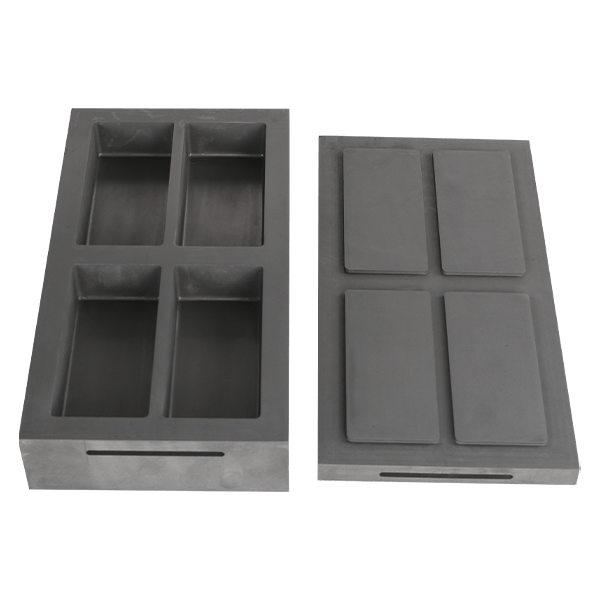
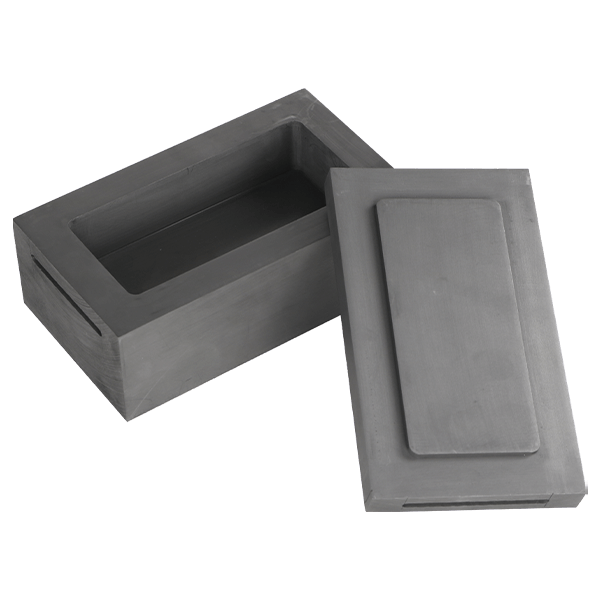
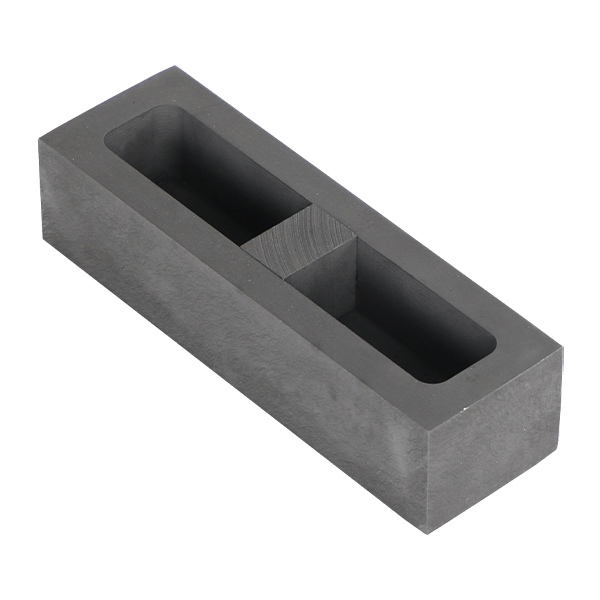
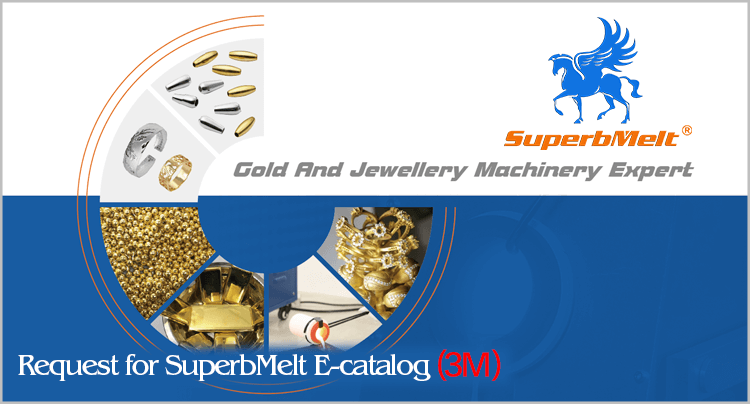
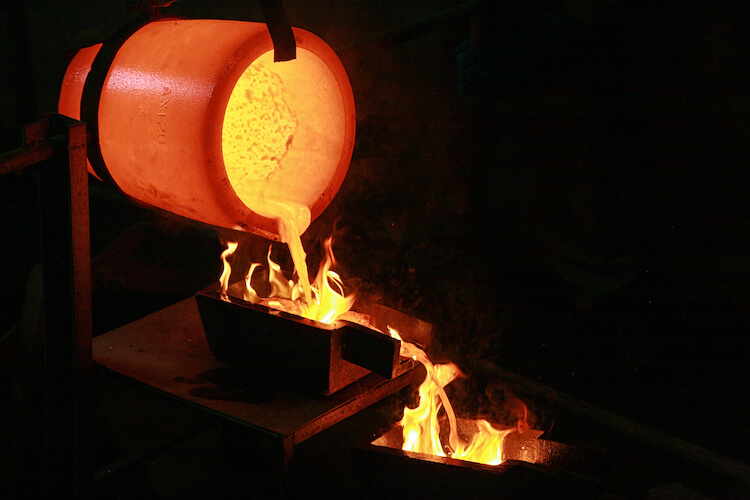
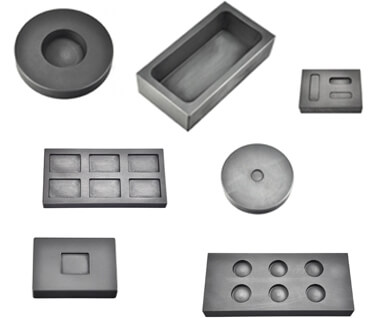
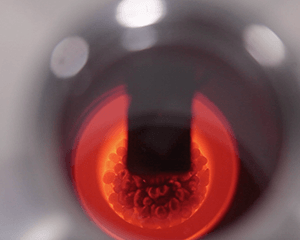
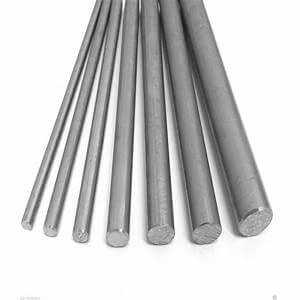
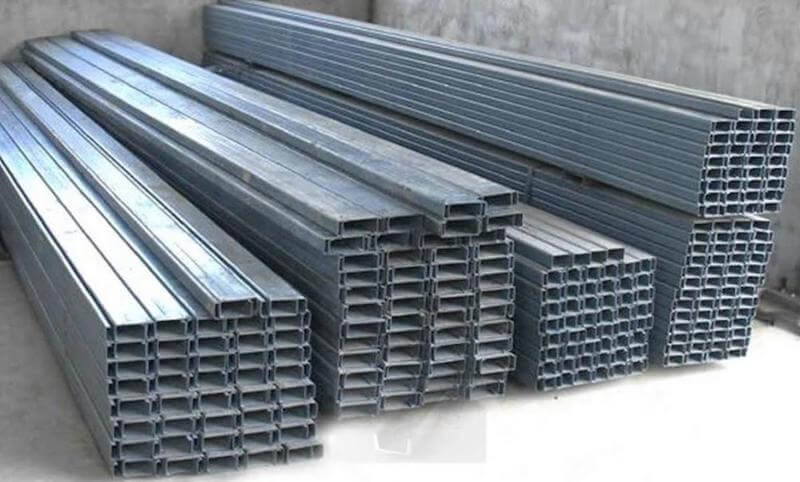
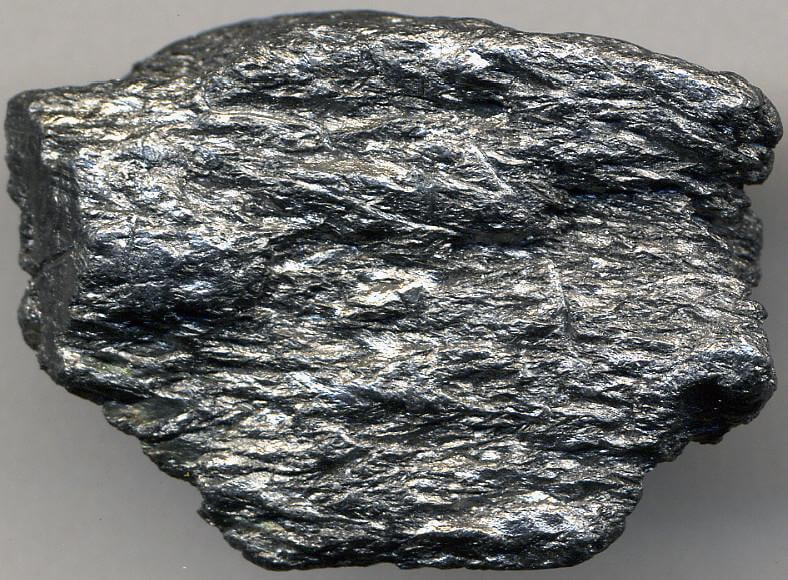
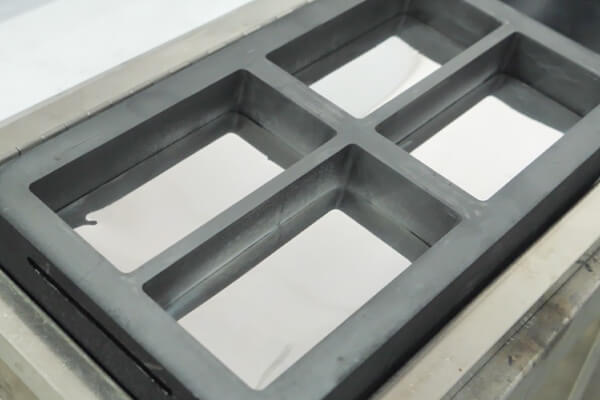
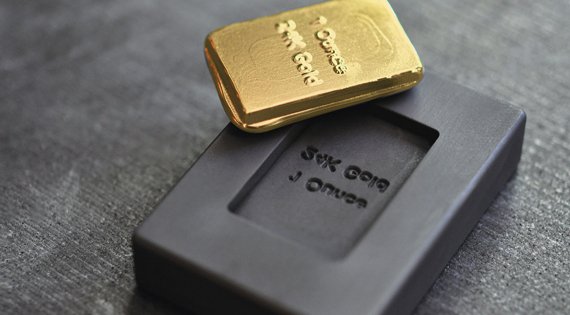
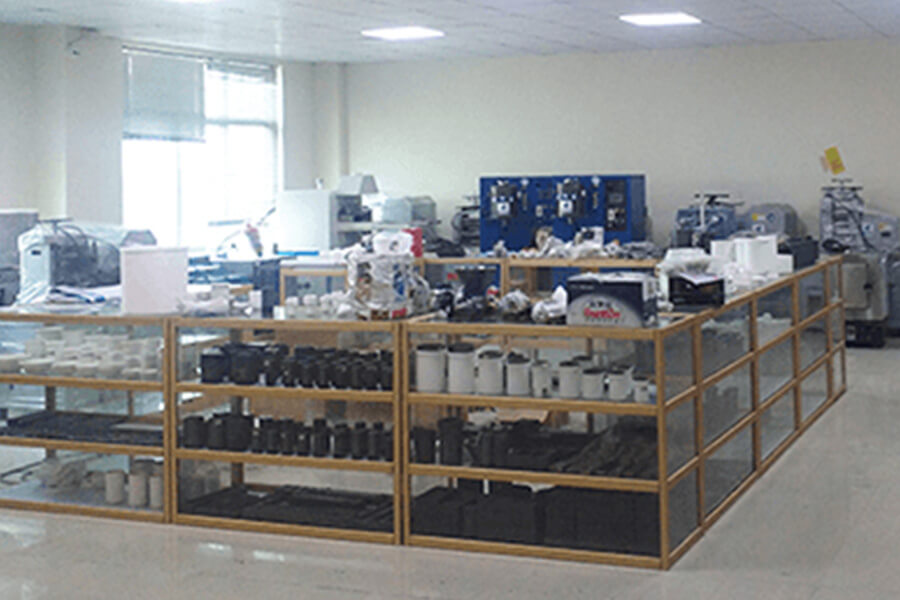
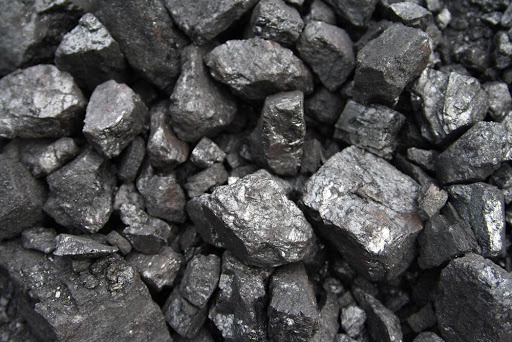
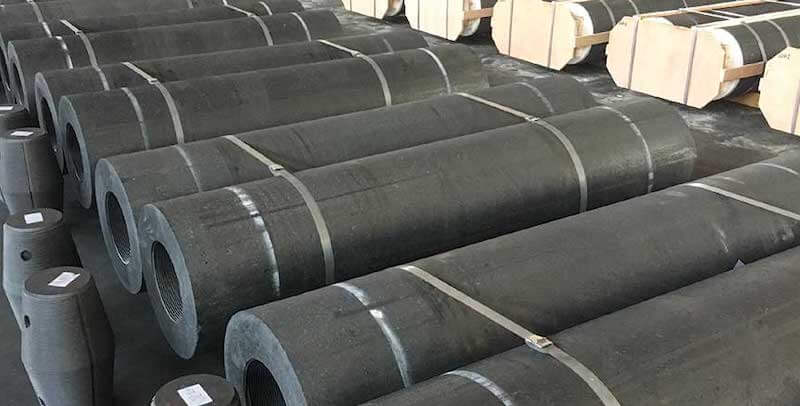
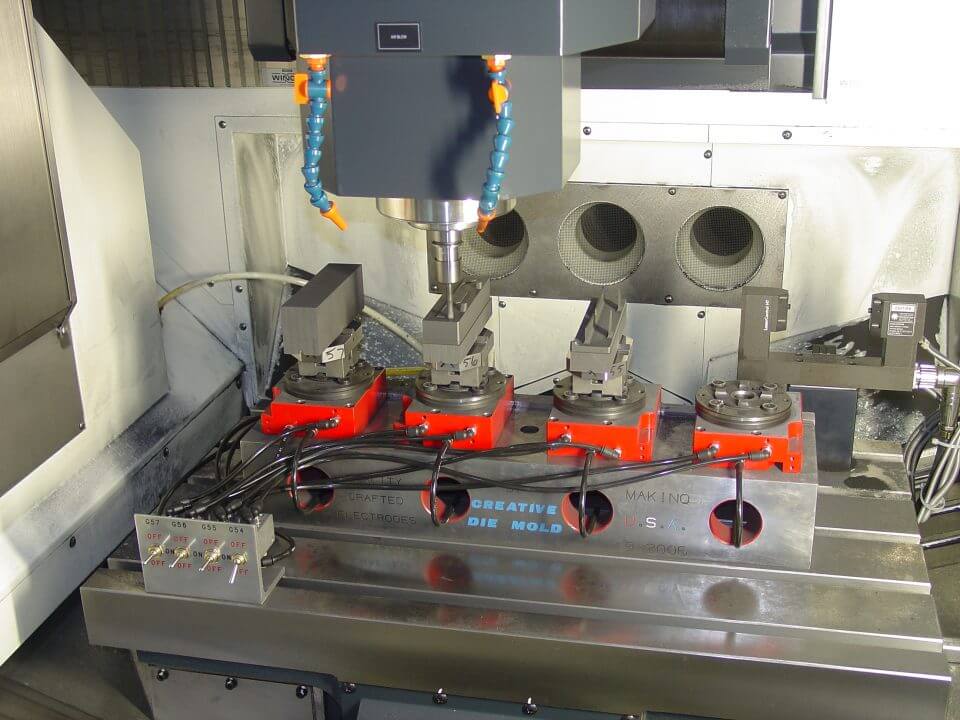
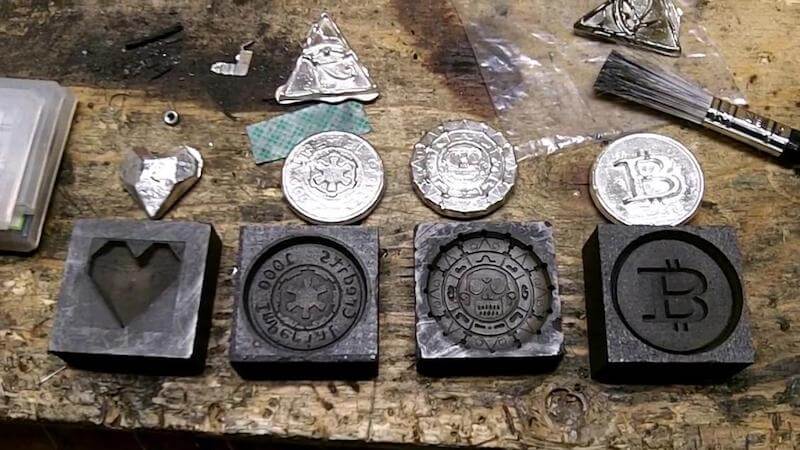
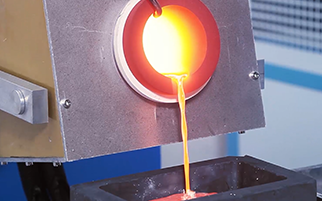
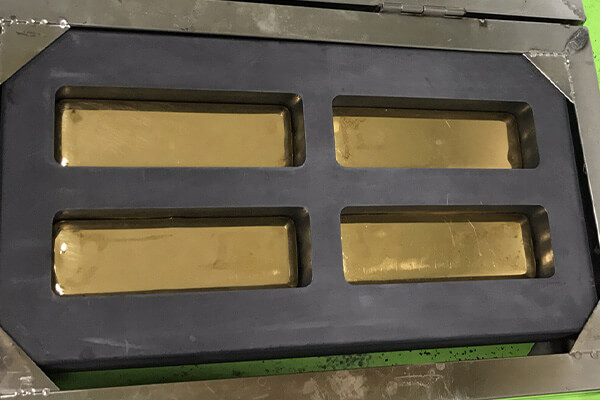

 © Copyright 2008-2021 Superb Electromachinery Co., Limited
© Copyright 2008-2021 Superb Electromachinery Co., Limited